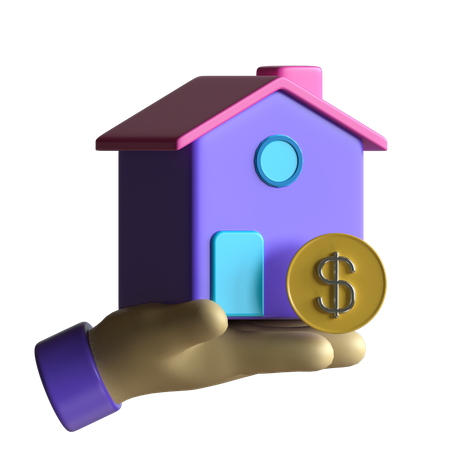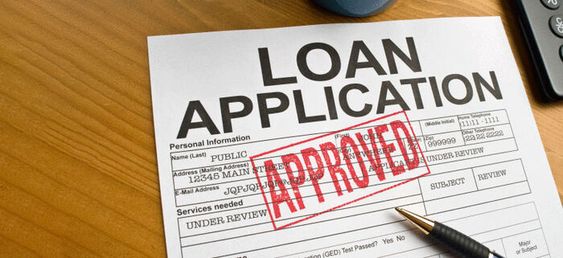Buying a house is a dream for many
__________
HOME LOAN
Easy to process as long as you approach the proper way for Home Loan.

Wide Range of Home Loans
Attractive Home Loan Interest Rates
Highest Home Loan Eligibility
Lenders provide a sum of money to borrowers for purchasing a home or constructing one, which is known as a home loan or housing loan. Borrowers can also take home loans for extending existing homes. Both fixed and adjustable interest rates, as well as payment terms, are available for home loans.
Home Loan in Paisacompare.in is easy to process, as long as you approach the proper way.
Paisacompare.in compare than book karo provides a Home Loan.
- Minimum Documents Required.
- Get loan in your Account within 24Hrs.
- Easy to Approval.
- Apply Online.
- 100% Paperless process.
Home Loan

Home loan, also known as a mortgage, is a type of loan that is specifically designed to help individuals or families purchase a home.
It is a long-term loan that is typically repaid over a period of many years, usually ranging from 15 to 30 years, although shorter and longer terms are also available depending on the lender and borrower’s preferences.
Here are some key features and components of a home loan:
1. Loan Amount:
The loan amount is the total sum of money that a borrower borrows from a lender to purchase a home. It is usually determined by the purchase price of the property, minus any down payment made by the borrower.
2. Interest Rate:
The interest rate is the cost charged by the lender for borrowing the money. The lender typically expresses it as an annual percentage rate (APR). They can fix or adjust the interest rate. A fixed-rate mortgage has an interest rate that remains constant throughout the loan term.
3. Repayment Term:
The repayment term is the length of time over which the loan must be repaid. It is usually measured in years. Common terms include 15, 20, or 30 years. The longer the term, the lower the monthly payments, but the more interest you’ll pay over the life of the loan.
4. Down Payment:
The down payment is the initial amount of money paid by the borrower toward the purchase price of the home. It is usually expressed as a percentage of the total purchase price.
5. Amortization:
Amortization Home loans are typically structured with an amortization schedule, which outlines the repayment plan over the loan term. The schedule shows how much of each monthly payment goes toward the principal (the loan amount) and how much goes toward the interest.
6. Closing Costs:
Closing costs are fees and expenses associated with finalizing the home loan. They include charges for services such as appraisal, credit report, title search, loan origination fees, and other related costs.
7. Prepayment Penalties:
Loans may have prepayment penalties, which are fees charged by the lender if the borrower pays off the loan early or makes larger payments than required. It’s important to review the loan terms to determine if any prepayment penalties apply.
It’s worth noting that specific terms and conditions of home loans can vary among lenders, and it’s essential to thoroughly review and compare different loan offers to find the best fit for your financial situation.
Lowest home loan intrest rate

The lowest home loan interest rate refers to the interest rate charged by a financial institution or lender on a home loan or mortgage. The interest rate is the cost of borrowing the money needed to purchase a home or property, and it is usually expressed as a percentage of the loan amount.
The specific interest rate offered on a home loan can vary depending on various factors, including the borrower’s creditworthiness, the loan amount, the loan term, the type of mortgage (fixed-rate or adjustable-rate), and prevailing market conditions.
Typically, lenders advertise their lowest home loan interest rates to attract potential borrowers.
These rates are often offered to borrowers with excellent credit scores and strong financial profiles. It’s important to note that not all borrowers will qualify for the lowest rates, and individual circumstances may affect the interest rate offered
When comparing home loan interest rates, it’s essential to consider other factors as well, such as loan terms, fees, and repayment options. While a low interest rate is desirable, it’s crucial to evaluate the overall cost of the loan and any additional charges associated with it.
To find the lowest home loan interest rates available, it’s advisable to research and compare offers from multiple lenders. Consulting with mortgage brokers or using online tools that provide rate comparisons can help in finding the most competitive rates for your specific situation.
It’s important to note that interest rates are subject to change and can fluctuate based on economic factors and central bank policies. Therefore, it’s crucial to stay updated on current market trends and consult with lenders to get accurate and up-to-date information on the lowest home loan interest rates available.
Home loan for women

Lenders design a type of mortgage called a home loan for women specifically for women borrowers. They offer these loans with the aim of empowering women and promoting gender equality in homeownership. Women borrowers often receive certain benefits and features that cater to their unique financial needs and circumstances.
1. Determine your eligibility:
2. Research and compare lenders:
3. Gather necessary documents:
4. Pre-approval process:
5. Loan application:
6. Loan processing and underwriting:
7. Loan approval and closing:
8. Disbursement of funds:
Property Mortgage Loan

Real estate or property secures a property mortgage loan, also known as a mortgage. Individuals and businesses commonly utilize it to finance the purchase of a home, commercial property, or land.
Here is a description of the key aspects of a property mortgage loan:
1. Borrower:
2. Lender:
3. Property:
4. Principal:
5. Interest Rate:
6. Loan Term:
7. Down Payment:
8. Amortization:
9. Closing Costs:
10. Prepayment and Default:
Best Home Loan

To apply home loan, also known as a mortgage, is a financial product that allows individuals to purchase or refinance a home by borrowing money from a financial institution such as a bank or a lender. It is a long-term loan typically repaid over several years, usually ranging from 15 to 30 years.
Here are some key aspects and benefits of a home loan:
1. Loan Amount:
Loans provide borrowers with the necessary funds to purchase a property. Factors such as the property value, the borrower’s income, creditworthiness, and the lender’s lending criteria determine the loan amount.
2. Interest Rates:
3. Repayment Options:
Repayment option generally offer various repayment options. The most common repayment method is the equal monthly installment (EMI), where borrowers make fixed monthly payments that include both principal and interest portions.
4. Loan Tenure:
5. Down Payment:
6. Tax Benefits:
7. Prepayment and Foreclosure:
8. Eligibility Criteria:
House Renovation Loan

A house renovation loan, also known as a home improvement loan or a home renovation loan, is a type of financing that is specifically designed to fund renovation or remodeling projects for your home. This type of loan allows homeowners to borrow money to make improvements, repairs, or additions to their property.
1. Purpose:
2. Loan Amount:
3. Interest Rates:
4. Loan Terms:
5. Collateral:
6. Application Process:
7. Disbursement of Funds:
Property Loan

A property loan, also known as a mortgage or a home loan, is a financial arrangement in which a lender provides funds to a borrower to purchase or refinance a property. It is a common way for individuals or businesses to acquire real estate when they do not have sufficient funds to make an upfront purchase.
Here are some key features and aspects of a property loan:
1. Borrower:
2. Lender:
3. Loan Amount:
4. Interest Rate:
5. Loan Term:
6. Down Payment:
7. Collateral:
8. Loan-to-Value (LTV) Ratio:
9. Monthly Payments:
Land Purchase Loan

The terms and conditions of land purchase loans may vary among lenders, but here are some common features:
1. Loan Amount:
2. Down Payment:
Land loans often require a higher down payment compared to traditional mortgage loans. The borrower is typically expected to contribute a substantial amount upfront, usually between 20% and 50% of the land’s purchase price.
3. Interest Rate:
4. Repayment Terms:
5. Collateral:
6. Documentation:
Best bank for Home Loan

Choosing the best bank for a home loan depends on various factors, including interest rates, loan terms, customer service, fees, and eligibility requirements. While it’s essential to conduct thorough research and consider your personal financial situation
Here are some well-regarded banks that often offer competitive home loan options:
1. Wells Fargo:
Wells Fargo is one of the largest mortgage lenders in the United States, offering a wide range of loan programs and competitive interest rates. They provide personalized guidance throughout the loan process and have an extensive branch network for in-person assistance.
2. Chase Bank:
Chase Bank is another major lender known for its diverse mortgage products and flexible loan terms. They offer various online tools to assist borrowers in comparing rates and exploring loan options. Chase also provides a smooth digital application process.
3. Bank of America:
Bank of America is a trusted lender that offers both fixed-rate and adjustable-rate mortgage options. They provide a digital platform for easy application and document submission, as well as the option for in-person consultations at their branches.
4. Quicken Loans/Rocket Mortgage:
Quicken Loans, rebranded as Rocket Mortgage, is a leading online lender with a streamlined digital mortgage application process. They provide a wide range of mortgage options and have gained a reputation for efficient and quick loan approvals.
5. US Bank:
US Bank known for its competitive interest rates and flexible loan terms. They offer a range of mortgage products tailored to different financial situations and have a strong presence throughout the country.
It’s crucial to note that the best bank for a home loan may vary based on your specific needs and circumstances. Before finalizing your decision, make sure to compare interest rates, loan terms, closing costs, customer reviews, and other factors that are important to you.

